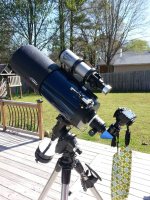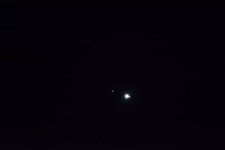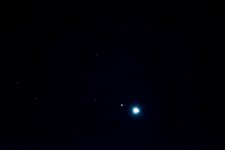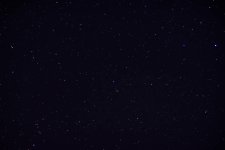This thread has given me a lot of information and I'm really mind blown at how much work and investment goes into capturing systems and galaxies.
To take proper galaxy photos I would need a telescope and a 200-500mm lens on a D750 wouldn't cut it? Even with a teleconverter like a 1.7x or a 1.4x?
How many shots need to be stacked to start extracting details from nebulae and galaxies?
A 200-500mm lens on a D750 will certainly work fine for the brightest galaxies you
don't need a telescope. Andromeda is where many people start, you can even see it with the naked eye in non light polluted areas, and its quite large.
These are the settings I would recommend:
Mount : Good solid tripod essential
Mode : Manual for Camera and Manual focus for Lens
ISO : 1600 (800 might be ok and give less noise)
Aperture : As wide as possible f/2.8 perfect f/5.6 is fine
Shutter : 30secs max on fixed tripod or stars will be elongated due to earths rotation.
Release : Use delay timer to take shot or use remote cable release.
Actually getting the stars in focus and making sure the galaxy is in the frame is the first challenge. You can get free planetarium software that really helps you know where to point the camera. (Stellarium and Carte du Ciel are the most popular).
This is where Live View really helps. So initially set your ISO really high like 6400 to help you see the stars (and a lot of noise) then manual adjust the focus around about the infinity setting to get them as small as possible in live view. This is very sensitive so be patient. The galaxy should appear as a feint glow on live view. Adjust the view by carefully moving the camera on the tripod to centre the galaxy in the field of view. when thats done change the ISO back to 1600 (or 800), the stars will still be just about viable in live view. Take at least 5 shots ideally 10 to 20 but after each 5 or so you may need to adjust the field of view as the earth has rotated. At the end put the lens cap on and take 3 - 5 shots at exactly the same settings. These are called Darks and are used to help removing noise when stacking. Thats it your done part one.
Part two is post processing.
You need to stack all the star shots (called Lights) and the Darks in software.
Deep Sky Stacker is the most popular and Its FREE ! It takes a bit of learning but works great. Many tutorials on You Tube.
When you have the stacked picture you can the do more post processing in your editor of choice.
Good luck, there are lots of other targets that you can try if you get the bug. But be warned your wallet might suffer. Also I see you have a D7000 that might be better for smaller galaxies when you get going because of the crop factor.





